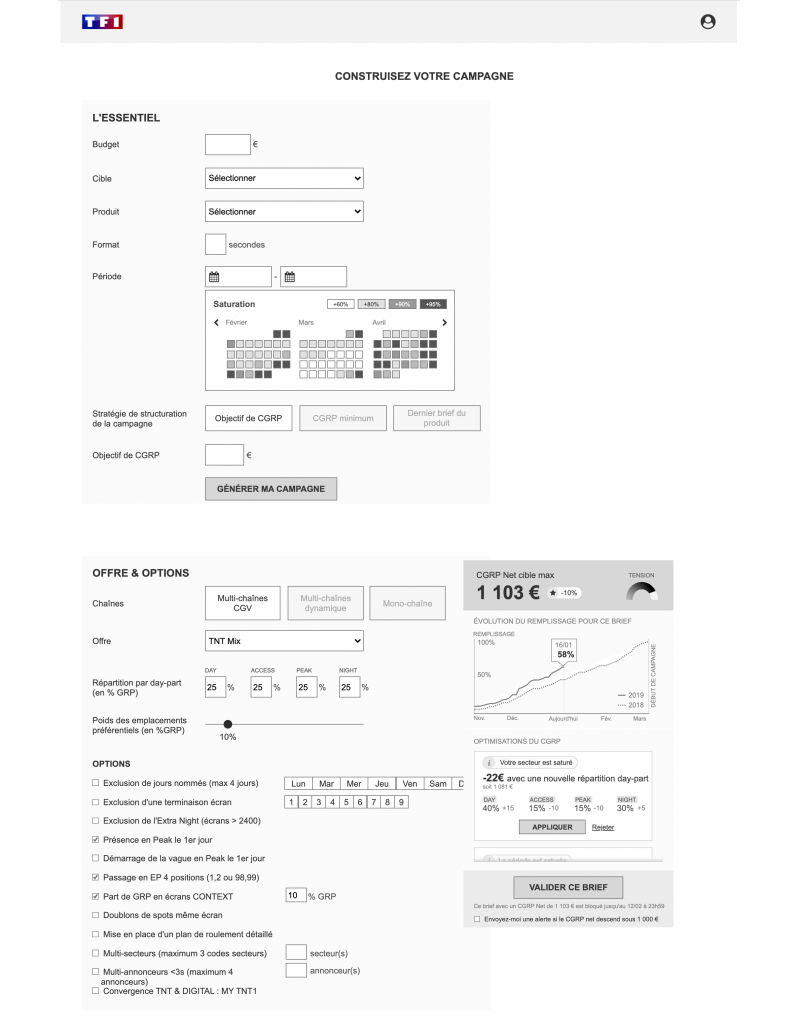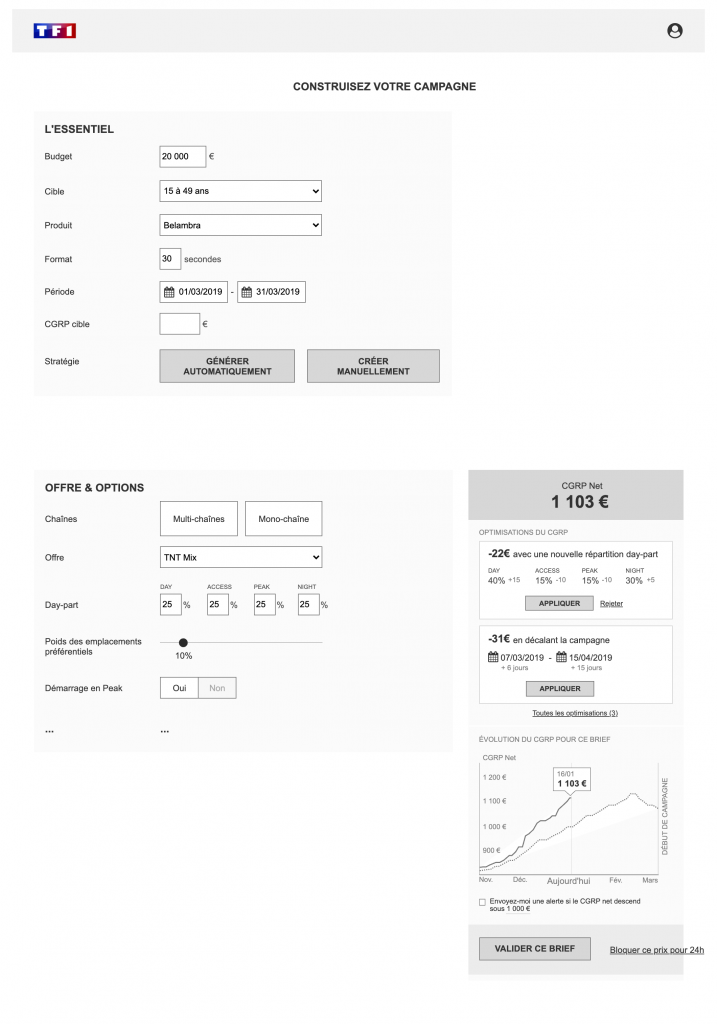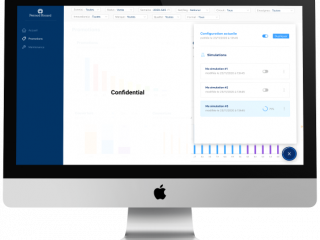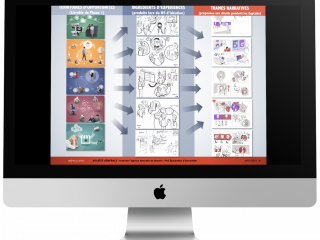Brief
Designing the first dynamic pricing service for the French TV ad market.
Project type:
Service offer
|Web Design
Specialities:
- UX Research
- UX Design
- Concept testing
- User Testing
Delivrables:
- Experience map
- Personas
- Wireframes
- Product statement and strategy
- MVP experimentation
Context
Traditionnaly, TV spots are sold at a fixed price depending of the duration and the time of the day. On low cost channels, ad space sellers introduced the sales of GRP (1 GRP = 1 targeted audience point).
This new selling method help to sell ad spaces in bulk and keep the cost of sales low. Only one index price was negotiated once a year. Then, each index (target, daypart, peak, period of the year, etc.) has a fixe price to be multiple by the reference price.
By the end of 2019, my client (one of the major media group in France) wanted to be the first on the french market to introduce a dynamic price to sell GRPs.
This new service target 3 benefits:
- Maximize the price of the GRP according to the consistency of the market
- Speed up the internal commercial process
- Speed up the media agencies buying process
This was the service and product I had to design with my team (UX Designer + Data Scientists)
Phase 1 – Understand
Business interviews
We conducted 11 interviews to define 3 different types of business profile. In fact we didn’t got enough interview of the same profile to create personas.
The business profiles were:
- Sales directors for the DTTV market
- Planning director for the DTTV market
- Media buyers in media agencies
Experience Map
Data collection and analysis
Based on the business interviews we identified some variable that could potentially influenced the price and the demand. Then we identified pattern and demand and where able to predict it over a certain range of targets or options.
Phase 2 – Ideate
Wireframes
6 versions of wireframes was done on Axure after a successful paper prototyping workshop with the project core team.
Concept testing
Testing the wireframes of this project with the futur users was one of the most striking experience in my all carrier.
Fist we introduce quickly the project and got their feedback on their challenges in the buying process. Media buyers were thrilled to be part of this co-design with the TV Channel.
Then, we gave a task to media buyers to perform on the high fidelity wireframe and ask them to comment all their actions and thoughts.
Each test was the same: we saw buyers become more and more concentrated and serious until they get really upset.
Some of the features were in direct opposition with media buyers objectives and business practices. They usually get to commit to their client on a range of price over 3 years. Moreover, once they have their index price at the beginning of the year they can estimate the price of each media campaign.
Without predictability of the price, the service would increase media buyers’ time per campaign and put them in lots of pressure to keep the price at the level they committed.
Problem refinement
This is were we found the core tension of the service to resolve for both the ad sellers and media buyers :
Flexibility VS Predictability
The following wireframes show some of test we did to integrate predictability in the service: price fixe range over time, last year planning occupancy evolution, planned occupancy rate.
Wireframes evolutions
Phase 3 – Prototype
We slightly improved the wireframes but kept the very functional one pager. Our goal was to develop the front-end fast to be able to release the MVP.
The MVP was developed in 3 months (front-end, back-end, finalisation of algorithms)
Phase 4 – Test
4 agencies participated in the 3 months experimentation.
The rule of the experimentation was pretty simple:
- media agencies participating in the test should have booked at least 15% of their media campaigns with the new tool
- 1 buyers per media agency to keep a high level of confidentiality
- all slots where available for booking in the app
We put in place a protocol not to test the usability of the interface, but to understand how the long term usage of the tool can possibly shift the first negative feeling. To do so, we setted up:
- 30min weekly meeting with each media agencies to gather regular feedback on price levels and possible technical bugs
- 1 focus group at the beginning of the experimentation
- 1 focus group at the end of the experimentation
Results
The results of the experimentation was consistent with the initial concept test:
- difficulties to understand the price evolution
- lack of information on the proposed optimisations
- increase fragmentation of the budget on different ad sellers
6 recommendations were done to my client based on the extensive analysis of the test. We had 3 opportunities to change the target, 2 opportunities were modification of the service, and 1 was a pivot to create a simple simulation tool to gather data on media agencies interests.













Leave a Reply